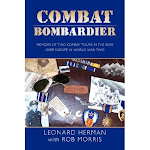Yesterday a ran across a cache of old photos taken by a Marine guard on board the USS San Diego in 1917 and 1918 during World War One. They provide a fascinating look at life on board a Navy ship nearly a hundred years ago. The USS San Diego was originally built about 1905 and named the USS California, with the name change coming a few years later. She sailed in the Pacific as a Navy flagship and then spent her last year in the Atlantic escorting convoys during World War One. Unfortunately, near the end of the war, she was sunk--possibly by a German U-Boat--and she rests on the ocean floor.
The Marine wrote on the backs of some of the photos, giving us more of a glimpse of life on this great ship.
The United States Ship (USS) California was the second of that name; She was an Armored Class Cruiser, assigned number 6. She was laid down in 1902 and launched 28 April 1904 by the Union Iron Works, San Francisco, Calif.; sponsored by Miss F. Pardee; and commissioned 1 August 1907, Captain V. L. Cottman in command. She was powered by two coal burning, four cylinder, triple expansion steam engines, which drove her two 37,000 pound bronze/magnesium propellers.
Joining the 2d Division, Pacific Fleet, the California took part in the naval review at San Francisco in May 1908 for the Secretary of the Navy. Aside from a cruise to Hawaii and Samoa in the fall of 1908, the cruiser operated along the west coast, sharpening her readiness through training exercises and drills. In December 1911 she sailed for Honolulu, and in March 1912 continued westward for duty on the Asiatic Station.
After this service representing American power and prestige in the Far East, she returned home in August 1912, and was ordered to Corinto, Nicaragua, then embroiled in internal political disturbance. Here she protected American lives and property, and then resumed her operations along the west coast; she cruised off California, and kept a watchful eye on Mexico, at that time also suffering political disturbance (1).
In September 1914 the California was renamed the San Diego to make her original name available for assignment to a battleship, as directed by Congress. She served as flagship for Commander-in-Chief, Pacific Fleet, intermittently until a boiler explosion put her in Mare Island Naval Ship Yard in reduced commission through the summer of 1915 (1).
The USS San Diego on 28 January 1915 while serving as flagship of the Pacific Fleet. Her name had been changed from the California on 1 September of the previous year.
On 21 January 1915 the San Diego suffered a boiler explosion. While taking the half hour readings of the steam pressure at every boiler, Ensign Robert Webester Cary Jr. had just read the steam and air pressure on number 2 boiler. He had just stepped through the electric watertight door into number 1 fire room when the boilers in number 2 fire room exploded. In fire room number 2 at the time was Second Class Fireman Telesforo Trinidad, of the Philippines and R. E. Daly, along with one other man. Ensign Cary stopped and held open the watertight doors which were being closed electrically from the bridge, and yelling to the men in No. 2 fire room to escape through these doors, which 3 of them did do. Ensign Cary held the doors open for a full minute with the escaping steam from the ruptured boilers around him. For His extraordinary heroism Ensign Cary was awarded the Congressional Medal of Honor2,3. He would later retire with the rank of Rear Admiral. Fireman Telesforo Trinidad was driven out fire room No. 2 by the explosion, but at once returned and picked up R. E. Daly, Fireman Second Class, whom he saw injured, and proceeded to bring him out. While coming into No. 4 fire room, Trinidad was just in time to catch the explosion in No. 3 fire room, but without consideration of his own safety, passed Daly on and then assisted in rescuing another injured man from No. 3 fire room. Trinidad was himself burned about the face by the blast from the explosion in No. 3 fire room. For his extraordinary heroism Fireman Second Class Trinidad was awarded the Congressional Medal of Honor also for this incident (2).
The San Diego returned to duty as flagship through 12 February 1917, when she went into reserve status until the opening of World War I. Placed in full commission 7 April, the cruiser operated as flagship for Commander, Patrol Force Pacific Fleet (1).
USS San Diego ACR-6 (ex-USS California) about 1917. Officers are Rear Admiral W.B. Caperton and his staff
On April 6, 1917, California Governor William D. Stephens received a telegram from the Secretary of the Navy calling the State’s Naval Militia into Federal Service. Upon the Governor’s orders the Naval Militia was immediately directed to assemble at their Armories and prepare for muster. The following organizations were mustered in as National Naval Volunteers: First Division, San Francisco; Second Division, San Francisco; Third Division, San Diego; Fourth Division, Santa Cruz; Engineer Section, Fourth Division, Santa Cruz; Fifth Division, Eureka; Sixth Division, Santa Barbara; Seventh, Eight, and Ninth Divisions, Los Angeles; Aeronautic Section, Ninth Division, Los Angeles; Tenth Division, San Diego; Eleventh Division, Los Angeles; First Engineer Division, San Francisco; Second Engineer Division, Los Angeles; and the First Marine Company, Los Angeles. The entire organization was subsequently mobilized on board the
USS Oregon, USS San Diego, USS Huntington (4) and USS Frederich (5).
On April 15th Lieutenant Adolph B. Adams and his 5th Division, California Naval Militia left with the San Francisco and Santa Cruz Divisions for Mare Island. At Mare Island the Division reported to George W. Williams on the USS Oregon and were assigned to the Armored Cruiser USS San Diego. On April 17th, sixteen men of the division were transferred to the USS Frederich (5). Between May 31st and July 18th 1917 those of the Division that were aboard the USS San Diego participated in Convoy duty along the California coast. One mission was a trip from Honolulu, Hawaiian Territory to Port Townsend with an interned German vessel under convoy escort (6). These duties entitled all the members of the ship to the “Escort” bar for their World War I Victory Medals.
On 18 July, the USS San Diego was ordered to the Atlantic Fleet. Reaching Hampton Roads, Virginia on 4 August, she joined Cruiser Division 2, and later bore the flag of Commander, Cruiser Force, Atlantic, which she flew until 19 September. San Diego's essential mission was the escort of convoys through the first dangerous leg of their passages to Europe. Based on Tompkinsville, New York, and Halifax, Nova Scotia, she operated in the weather-torn, submarine-infested North Atlantic safely convoying all of her charges to the ocean escorts1. Prior to the sinking of the USS San Diego, Lt. Adolph B. Adams was transferred off the ship and assigned to the USS Tallahassee at the Panama Canal Zone (6).
On 8 July 1918, the San Diego left Portsmouth, New Hampshire, en route to New York. She had rounded Nantucket Light and was heading west. On 19 July 1918, she was zigzagging as per war instructions on a course for New York. The Sea was smooth, and the visibility was 6 miles. At 11:23 AM, a huge explosion tore a large hole in her port side amidships. The explosion crippled the port engine. Captain Christy immediately sounded the submarine defense quarters, which involved a general alarm and closing of all watertight doors. Soon after two more explosions ripped through her hull. These secondary explosions were later determined to have been caused by the rupturing of one of her boilers and the ignition of one of her magazines. The ship immediately started to list to port. Captain Christy ordered the starboard engine rung up to full speed and headed toward the shore in an attempt to ground the San Diego in a salvageable depth of water. Soon afterward the starboard engine quit. The Officers and crew quickly went to their battle stations. Guns were fired from all sides of the warship at anything that could be a periscope or submarine. Her port guns fire until they were awash. Her starboard guns fired until the list of the ship pointed them into the sky. Under the impression that a submarine was in the area, the men stayed at their posts until Captain Christy gave the order “All hands abandon ship” after the starboard engine quit. At 11:51 AM the San Diego sunk only 28 minutes after the initial explosion. As per Navy tradition Captain Christy was the last man off the ship. As the Captain left the ship, the crew in the lifeboats gave him a cheer and burst in to signing the National Anthem. As the Officers and crew watched from their lifeboats the San Diego capsized and sunk to the bottom of the Atlantic Ocean about 8 miles off Long Island’s south shore. Today she lies in water ranging from 65 to 116 feet deep.


















 I took these photos of Lee when visiting him in Canton, Ohio. RM
I took these photos of Lee when visiting him in Canton, Ohio. RM



 Marshall Dullum, bottom row, second from left, when he was a radio operator on the giant B-29 Superfortress directly behind the crew. This plane flew out of Japan over Korea.
Marshall Dullum, bottom row, second from left, when he was a radio operator on the giant B-29 Superfortress directly behind the crew. This plane flew out of Japan over Korea.








